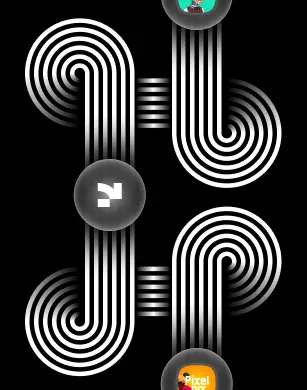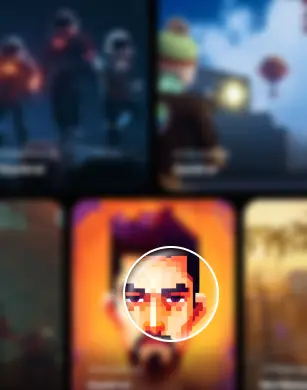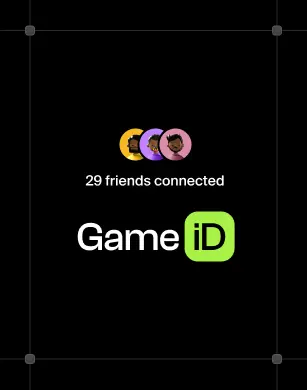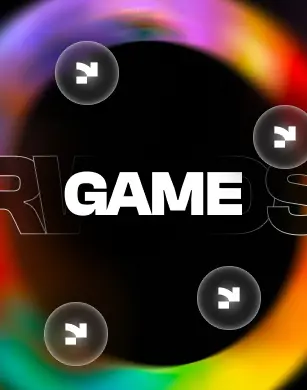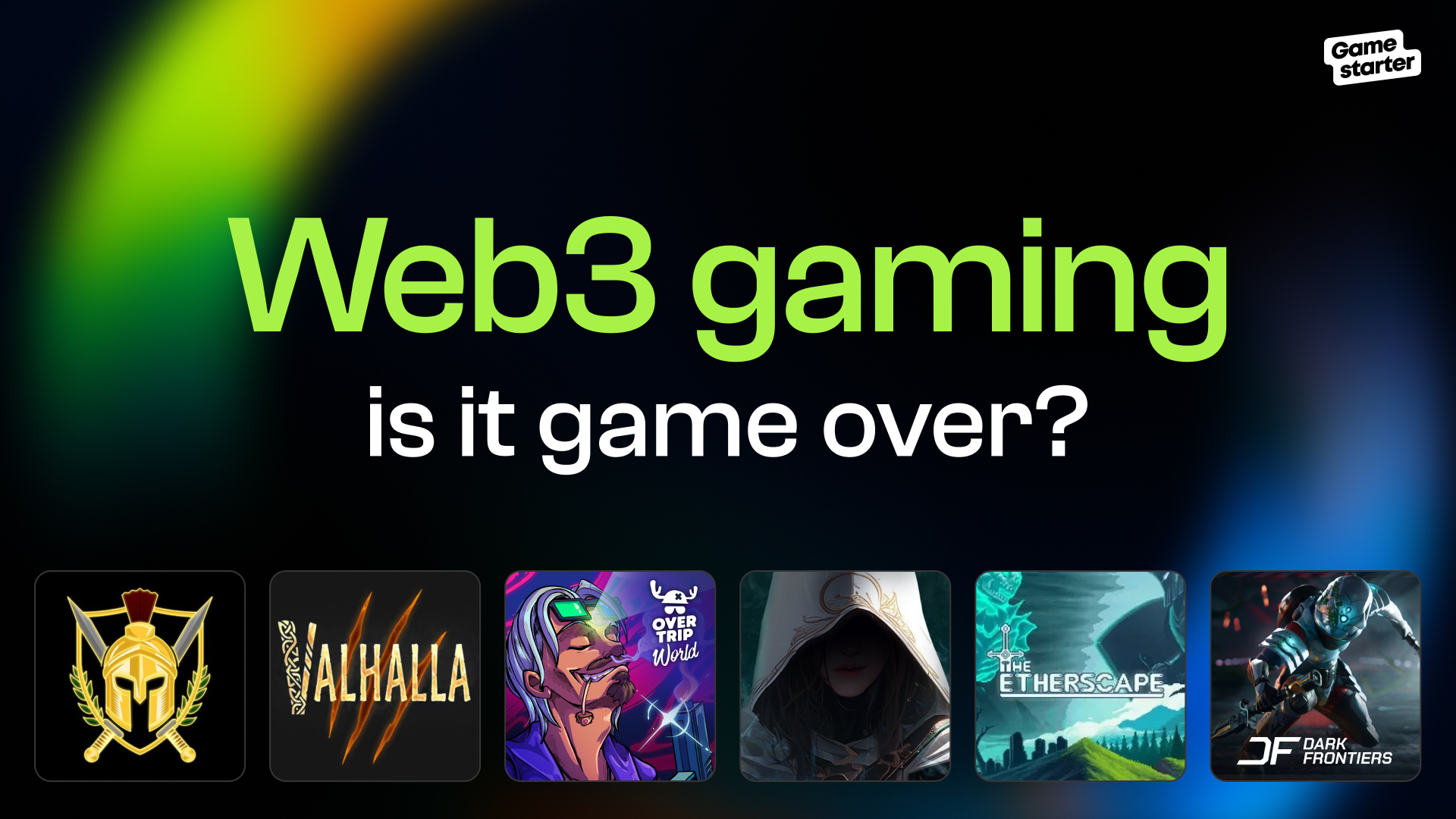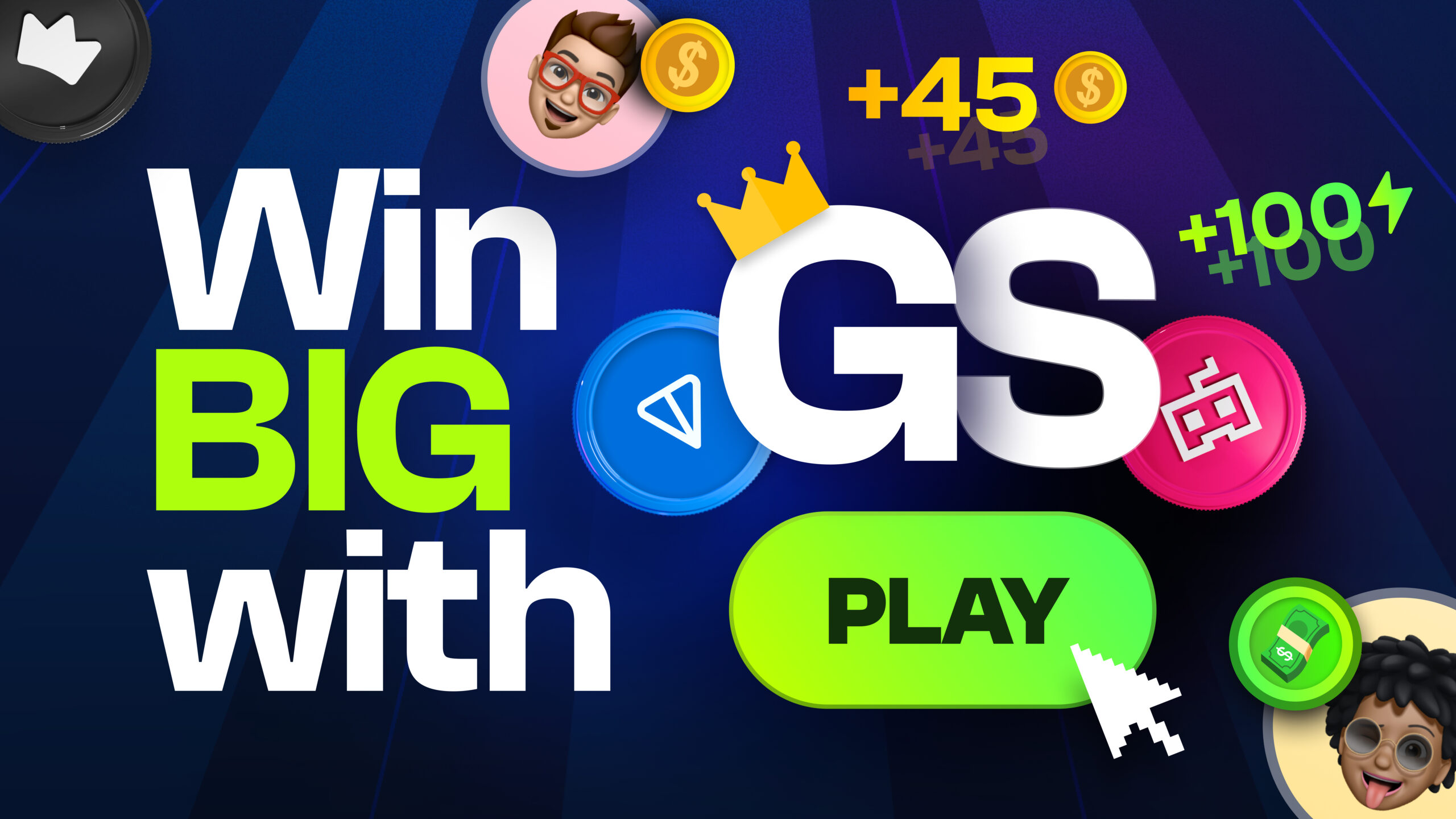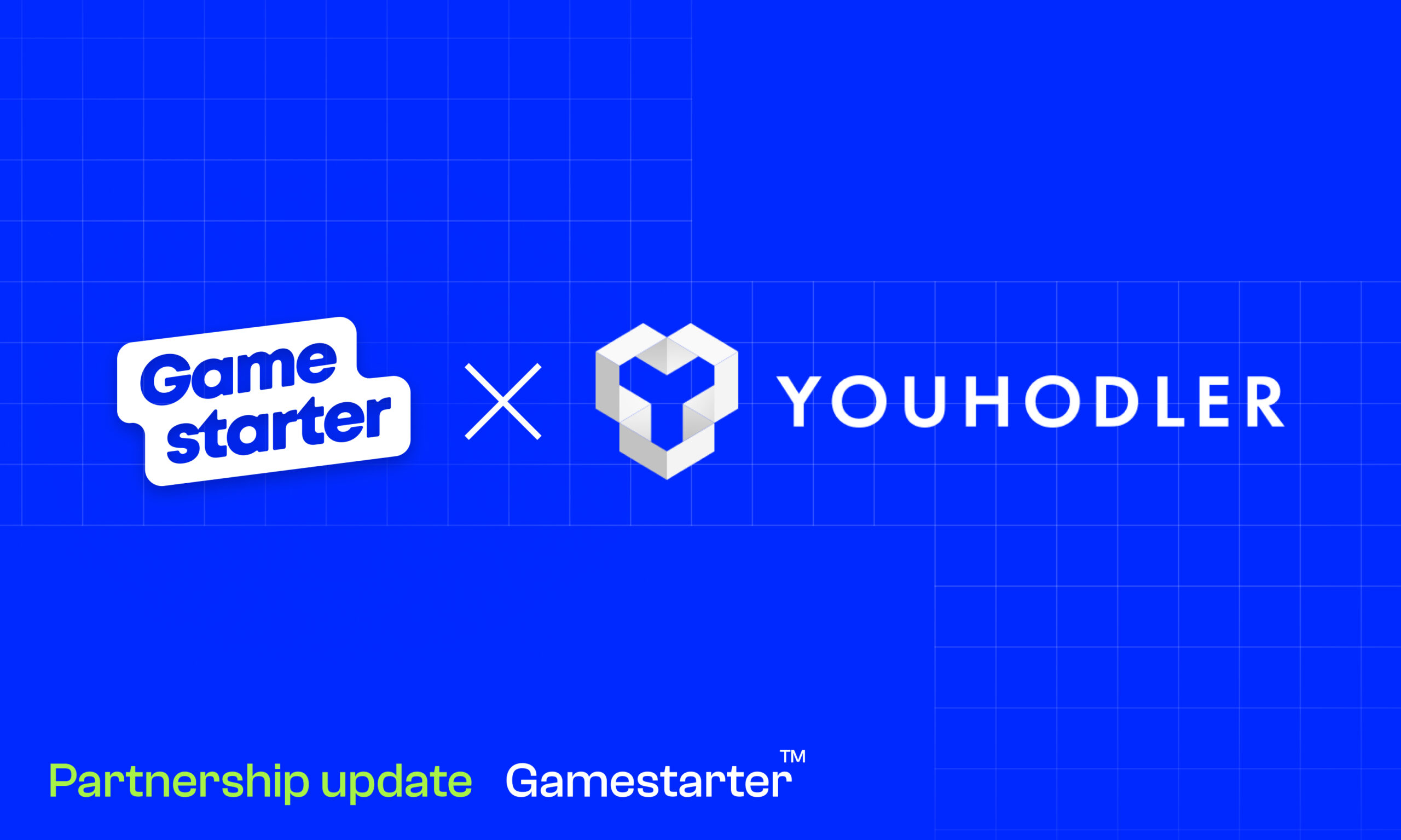The Future of Gaming: Layer 2 and 3 solutions

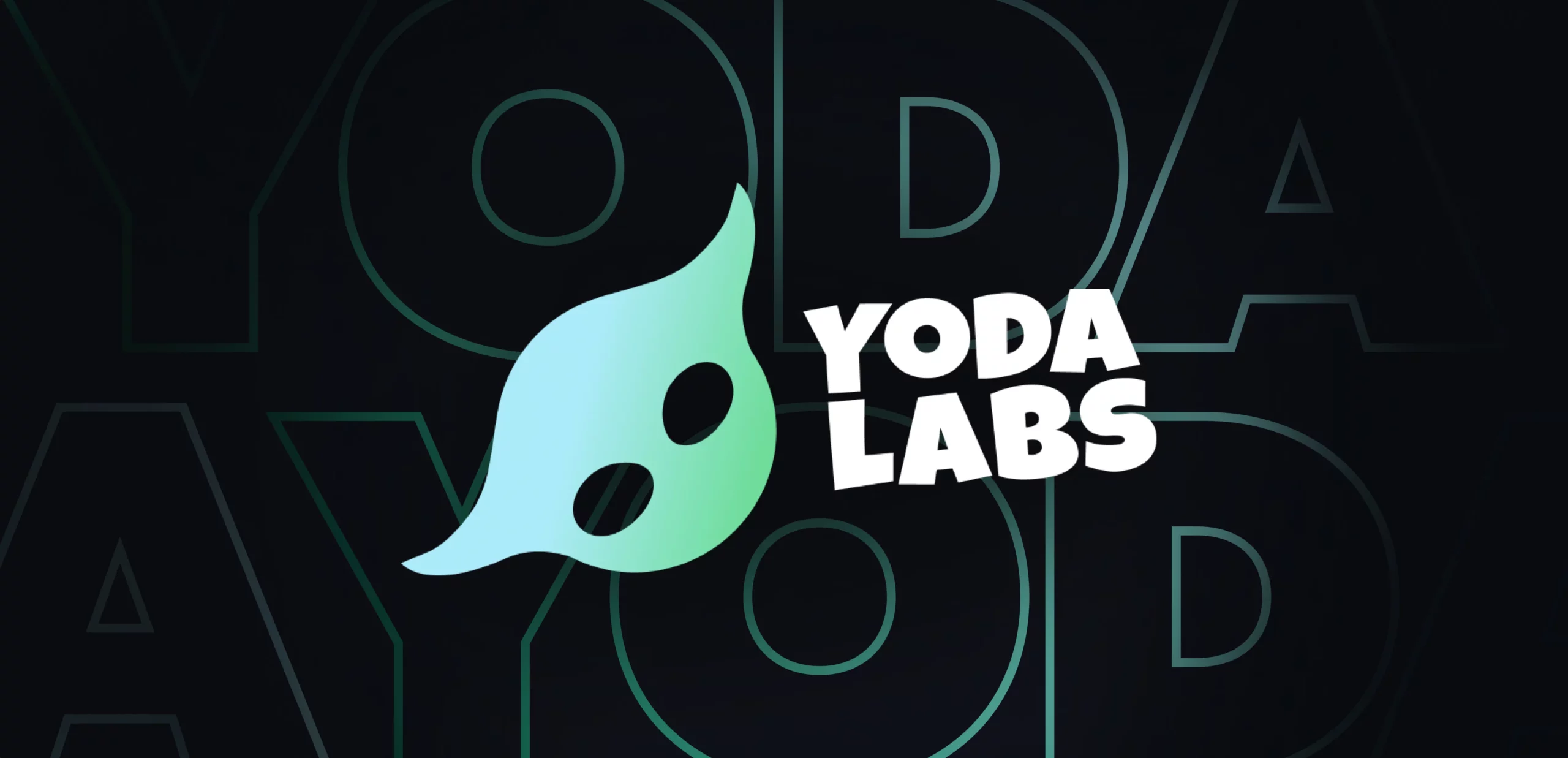
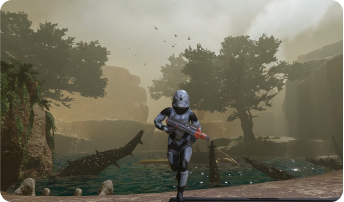
Become part of exclusive group that shapes GS Future
Co-authored with our partners at Yoda Labs
The emergence of Web3 technologies has fundamentally reshaped the gaming landscape, offering players unprecedented control over their in-game assets and fostering vibrant play-to-earn ecosystems.
Although numerous acclaimed Web3 games have relied on Ethereum, scalability issues and soaring transaction fees have posed challenges. Consequently, many developers have embraced Layer 2 and even Layer 3 solutions to optimize gaming experiences.
Let’s dive into the world of Gaming Focused L2 & L3 Solutions!
Table Of Contents
- The Genesis
- Key Layer 2 Solutions for Blockchain Gaming
- Challenges and Evolution in Layer 2 Solutions
- Top Gaming Focused L2 & L3 Solutions
- 1. Polygon
- 2. ImmutableX
- 3. Ronin
- 4. Arbitrum Nova
- 5. Arbitrum Orbit
- 6. Xai
- 7. Myria
- 8. Beam
- 9. Ape Chain
- 10. Other Gaming Focused L2 & L3 Solutions
- Conclusion
The Genesis
Since its inception, Ethereum has become a cornerstone platform in the blockchain scene, trailing only Bitcoin in market capitalization. Renowned for its smart contract functionality and robust security features, Ethereum swiftly became a nucleus for diverse Web3 games. Developers were and are still drawn to Ethereum’s extensive user base, providing access to a broader potential audience for their games.
However, Ethereum encounters a substantial obstacle amidst its burgeoning popularity and usage: scalability.
For instance, Dark Forest, touted as the world’s first decentralized real-time strategy game, was built on Ethereum. Despite its brief existence, it generated a substantial spike in transaction volume fueled by hype and incentives. At its zenith in 2020, Dark Forest created a gas rate consumption surpassing that of the entire Ethereum mainnet.

Source: BSCScan
Ethereum is not the only Layer 1 facing these challenges. In July 2021, the game CryptoBlades on the BNB Chain recorded 8 million daily transactions, presenting significant network capacity challenges. The resulting daily gas fees exceeded 6,800 BNB, equivalent to $3 million. Consequently, the network grappled with sluggish transaction speeds, delayed finality, and an unsatisfactory user experience for gamers and users of other dApps.

Picture a bustling highway; Ethereum resembles such a thoroughfare, grappling with exorbitant transaction fees and sluggish processing times as its user base expands. These costly and time-consuming transactions risk rendering Web3 games virtually unplayable.
This is where Layer 2 and 3 solutions come into play, acting as essential bypasses to alleviate congestion on this crowded highway. Layer 2 has notably emerged as a focal narrative in Web3 since 2022.
Essentially, L2 solutions refer to blockchains constructed atop or alongside the Ethereum blockchain to enhance scalability. These secondary chains typically facilitate significantly higher transaction throughput at lower fees. However, they often exhibit greater centralization and diminished security than Ethereum’s L1 chain.
Let’s look at an analogy to understand it better.
Ethereum: The Government Postal Courier of Blockchain
In this analogy, we can compare the Ethereum network to a country’s main government-owned postal courier. It is renowned for its reliability, security, and accessibility. However, Ethereum often grapples with congestion, delays, and relatively high costs due to its extensive reach and high demand- just like a busy postal service.
Layer 2 Solutions: Private Delivery Services
Layer 2 solutions, on the other hand, resemble private delivery services. They are numerous, facilitating faster and more cost-effective package transfers. Yet, despite their efficiency, they may lack the widespread trust and credibility associated with the main postal service, potentially leading some users to question their reliability for shipping crucial packages.
Layer 3 Solutions: Specialized Delivery Services
Let’s extend the analogy further: we can imagine Layer 3 solutions as specialized delivery services built upon the infrastructure of private delivery services (Layer 2). These services cater to specific needs or requirements that mainstream private delivery services may not efficiently fulfill. They offer tailored, expedited, and cost-effective services for particular types of packages or specific user demographics.
For instance, imagine a scenario where ultra-fast delivery is imperative for perishable goods or high-value items. In such cases, a Layer 3 solution might specialize in lightning-fast transaction processing, bolstered by additional layers of security and reliability, to meet the demands of users.
Concept of Layer 3 in Blockchain
Currently, the concept of “Layer 3” within the blockchain industry lacks a universally agreed-upon definition. Vitalik Buterin, co-founder of Ethereum, contended that it is premature to establish definitive definitions as the architecture of the multi-rollup ecosystem is still evolving.
Nevertheless, Buterin has outlined three potential visions for what Layer 3s could represent in the future:
- Customized Functionality: Layer 2 is primarily geared towards scaling, whereas Layer 3 could focus on tailored functionalities, such as privacy enhancements.
- Customized Scaling: While Layer 2 addresses general-purpose scaling, Layer 3 may specialize in customized scaling solutions tailored to specific needs.
- Trust Models: Layer 2 solutions, like rollups, prioritize trustlessness, whereas Layer 3 solutions, such as Validiums, may rely on weaker trust models for scaling.
Key Layer 2 Solutions for Blockchain Gaming
Optimistic Rollups:
Optimistic rollups represent a Layer 2 scaling solution that facilitates expedited and economical transactions by conducting most transactions off-chain. The primary chain is solely utilized for dispute resolution or confirmations, alleviating congestion, and hastening the gaming experience.
ZK-Rollups:
Zero-knowledge (ZK) rollups harness sophisticated cryptographic techniques to consolidate multiple transactions into a singular proof. This approach significantly lightens the burden on the main blockchain, resulting in enhanced scalability and reduced transaction fees for blockchain games.
State Channels:
State channels empower users to execute transactions off-chain, only engaging with the main blockchain when necessary. By minimizing the volume of on-chain transactions, this method enhances blockchain games’ overall efficiency and swiftness.
Plasma Chains:
Plasma chains create parallel chains to the main blockchain, allowing developers to execute smart contracts and transactions off-chain, with periodic checkpoints recorded on the mainnet. This separation mitigates congestion on the main chain, fostering a more responsive and cost-effective gaming environment.
Sidechains:
Sidechains establish parallel chains to the main blockchain, enabling developers to implement specific features or games on these secondary chains. This segregation of functions mitigates congestion on the primary chain, fostering a more responsive and cost-efficient gaming environment.
Validiums:
Validiums, like StarkWare, utilize validity proofs akin to ZK rollups but refrain from storing data on layer 1. Multiple validity chains can operate concurrently, each processing approximately 10,000 transactions per second. However, due to the necessity for more specialized languages, there is limited support for general smart contracts.
Challenges and Evolution in Layer 2 Solutions
Not every experiment or idea for Layer 2 proves successful. For instance, in January 2020, the Ethereum research organization Plasma Group announced the cessation of its operations in its existing form, opting to donate the remaining funds to Gitcoin. This decision stemmed from a strategic pivot towards prioritizing Optimistic rollups.
Similarly, State Channels faced setbacks, primarily due to the rigidity of requiring users to lock up funds. Moreover, the lack of support for general-purpose smart contracts and dApps in 2021 led to the abandonment of State Channels.
Despite these challenges, Ethereum also has been actively working on scaling its blockchain network natively. However, solutions like Arbitrum and Optimism have gained prominence for consolidating hundreds of transactions into a single rollup, alleviating traffic congestion on the mainnet.
 Source:L2Beat
Source:L2Beat
Currently, the Total Value Locked (TVL) in Layer 2s stands at an impressive $25 billion, a figure expected to soar with more chains and liquidity expansion. While data regarding Layer 3 remains limited, no one can overstate the impact of L3 solutions on tackling blockchain scalability challenges.
According to The Blockchain Gaming Alliance (BGA) 2023 State of the Industry Report, 57% of games that migrated from L1 blockchains transitioned to L2 solutions, with 41% opting for another L1 and 2% moving to L3 networks.
Additionally, there has been a proliferation of these chains, as Delphi Digital’s The Year Ahead for Gaming 2024 revealed that the total count of gaming-centric networks has steadily increased, with 76 new networks emerging in 2023 alone, spanning general-use L1s, L2s, and application-specific chains.
Top Gaming Focused L2 & L3 Solutions
1. Polygon (L2)

Polygon is a Layer-2 scaling sidechain solution that seamlessly integrates with the Ethereum blockchain, offering a secure, faster, and more cost-effective system. Its expanding suite of products provides developers with easy access to primary scaling and infrastructure solutions, while its plug-and-play software development kits (SDKs) empower game studios such as Ubisoft, Atari, Square Enix, and others to incorporate blockchain elements into their games effortlessly. Meanwhile, collaborations with Web2 firms like Stripe, Facebook, and DraftKings accentuate Polygon’s growing significance in the broader gaming landscape.
With renowned studios like EA, Riot Games, and Activision among its clients and top-tier talent like Michael Blank (formerly of EA) on board, Polygon has solidified its position as a key player in the gaming industry.
 Source: DefiLlama
Source: DefiLlama
Initially focusing on applications for DeFi, Polygon shifted its focus towards gaming in June 2021, marking a pivotal moment in its trajectory. The launch of Polygon Studios in July 2021 reinforced its dedication to gaming, coinciding with the rise of play-to-earn games and NFT platforms on the blockchain. Notably, games developed on Polygon experienced exponential growth in user bases, with some, like My Crypto Heroes, witnessing a surge of up to 1000%. Polygon is now home to numerous popular web3 games, including Planet IX, Aavegotchi, Beji Bananas, etc.
Innovative Upgrades and Future Plans
Polygon unveiled Polygon 2.0 in June 2023, introducing significant upgrades such as the zkEVM rollup and the proposal to transition to zkEVM Validium in its PoS layer. Polygon plans to launch AggLayer soon, attracting over 20 projects, including Manta Pacific, Palm Network, and Flipkart.
As part of Polygon 2.0, the POL (Polygon Ecosystem Token) will gradually replace the MATIC token over four years in a 1:1 ratio. This transition accompanies Polygon’s evolution into a Polygon zkEVM validium, with the POL token offering enhanced utility, including restaking options for validators to secure other chains in the Polygon supernet and earn additional rewards. While the possibility of an airdrop remains slim, it is still not zero.
2. ImmutableX (L2)

ImmutableX emerges as a layer 2 scaling solution tailored for NFTs and games on the Ethereum blockchain, promising near-instant confirmations and minimal gas fees. Conceived by James Ferguson, Robbie Ferguson, and Alex Connolly in Australia in 2018, ImmutableX aspires to democratize Web3 game development, offering a seamless entry point for millions of gamers worldwide into the intricacies of blockchain tech.
Since its inception, ImmutableX has captivated the crypto and gaming communities, earning acclaim from leading titles in blockchain gaming, such as Illuvium, Guild of Guardians, and PlanetQuest, which proudly tout Immutable as a key collaborator.
Originally known as Fuel Games, ImmutableX secured its initial financing round in July 2018, followed by a Series A funding round in September 2019 with contributions from NASPERS, Galaxy Digital, Coinbase, and others. The company’s trajectory soared with subsequent fundraising rounds, including a $12.5 million raise in less than an hour, a $60 million Series B round at a $410 million valuation in September 2021, and a staggering $200 million Series C funding at a $2.5 billion valuation.
ImmutableX’s innovative technology has attracted attention from industry titans spanning GameStop, Unity, Warner Bros, TikTok, and Nike-owned RTFKT, among others. Hosting over 220 Web3 games, ImmutableX has forged partnerships with industry giants like Ubisoft and Amazon.
2023 marked significant milestones for Immutable, including Guild of Guardians’ successful Friends & Family demo, Gods Unchained’s inclusion in the Epic Games Store and Amazon Prime Gaming, and the highly anticipated Shardbound amassing over 80K pre-registrations.
 Source: DefiLlama
Source: DefiLlama
ImmutableX’s Passport, a recently launched solution, addresses a critical barrier to mainstream blockchain gaming adoption by offering seamless authentication and user experience. Additionally, the L2 platform has partnered with Polygon to unveil the mainnet of Immutable zkEVM, a gaming-focused rollup leveraging zk tech from Polygon.
A significant portion of the 220+ well-funded games building on Immutable will go live this year, marking another milestone in ImmutableX’s journey toward reshaping the NFT and gaming landscape. So, watch ImmutableX closely for potential airdrops and NFT drops of its upcoming games.
3. Ronin (L2)

Crafted by the innovative minds at Sky Mavis, Ronin Network is a revolutionary force in the gaming landscape, offering an Ethereum L2 sidechain solution.
Before the advent of Ronin, Sky Mavis collaborated with Loom Network. However, as Loom shifted its focus to enterprise solutions, a misalignment emerged, prompting Sky Mavis to terminate the partnership and embark on developing their independent blockchain. Ronin emerged from this initiative, aiming to pioneer blockchain for gaming with near-instant transactions and low fees, seamlessly handling millions of in-game microtransactions.
Navigating Challenges
In March 2022, Ronin’s bridge connecting Ronin to Ethereum encountered a massive $622 million hack. North Korean hackers were blamed for the attack, and some of the lost funds were eventually recovered. Sky Mavis and the Ronin network swiftly refunded affected users in June 2022. Despite setbacks, Ronin recovered from the hack, overhauling its core systems to bolster decentralization and security.
Besides, Sky Mavis solidified expansion plans by partnering with leading game studios such as Tribes Studio, Bali Games, Directive Games, and Bowled.io. This strategic collaboration aimed to enrich the Axie Infinity universe, with over ten studios joining the initiative in the past year, signaling further collaborations on the horizon.
In April 2023, the Ronin blockchain transitioned to the delegated proof-of-stake mechanism (DPoS), enhancing decentralization. With DPoS, any Ronin ($RON) token holder with at least 250,000 RON staked on the blockchain can delegate or select validators for the network.
Subsequently, in October 2023, Ronin implemented the Shillin Hardfork, introducing significant upgrades such as reducing finality from 45 seconds to 6 seconds. The network also launched the RESTful API, catering to developers’ needs. Additionally, Sky Mavis unveiled the Mavis Store, an online shop featuring non-blockchain in-game items from the catalog of games deployed on Ronin, further enhancing the user experience.
 Source: DefiLlama
Source: DefiLlama
Growing Game Ecosystem
The Wild Forest Public NFT Sale is coming soon ⚔️
Wild Forest is the first real-time strategy (RTS) game on Ronin.
Warriors around the world will soon have access to Packs chock full of Unit, Skin, and Lord NFTs.
Key details:
• February 22nd at 10pm PHST / 9am ET
• Buy… pic.twitter.com/5qdGsiEpas
Presently, Ronin hosts ten games, with eight actively live, including Axie Infinity, The Machines Arena, Bowled, Battle Bears, Wild Forest, Apeiron, Pixels and ZOIDS WILD ARENA. Additionally, the platform anticipates the imminent launch of two upcoming games, Axie Champions, and Tribesters: Island of Solas, further enriching its gaming ecosystem.
Besides, Pixels’ migration from Polygon to Ronin in late 2023 rejuvenated interest in the chain, catalyzing a play-to-airdrop campaign that concluded in January 2024. This initiative sparked a surge in active users on Ronin, benefiting other games on the platform and reigniting enthusiasm around its potential.
Expanding Partnerships and Future Developments
Ronin has positioned itself as a formidable scaling solution for gaming, adeptly managing extensive transaction volumes. The recent Binance listing of RON validated our earlier predictions, as it got listed within a few weeks of our predictions.
Moreover, Ronin has attracted partnerships with industry giants like Google, Nansen, Animoca Brands, Pyth Network, and others. The platform has hinted at opening its doors to other studios for deployment on Ronin and teased upcoming airdrop programs and partner token launches. Besides, the forthcoming Miko hard fork, scheduled for February 26, promises innovative features such as sponsored transactions, enabling game studios to sponsor transactions on Ronin, further enhancing its appeal and utility.
4. Arbitrum Nova (L2)
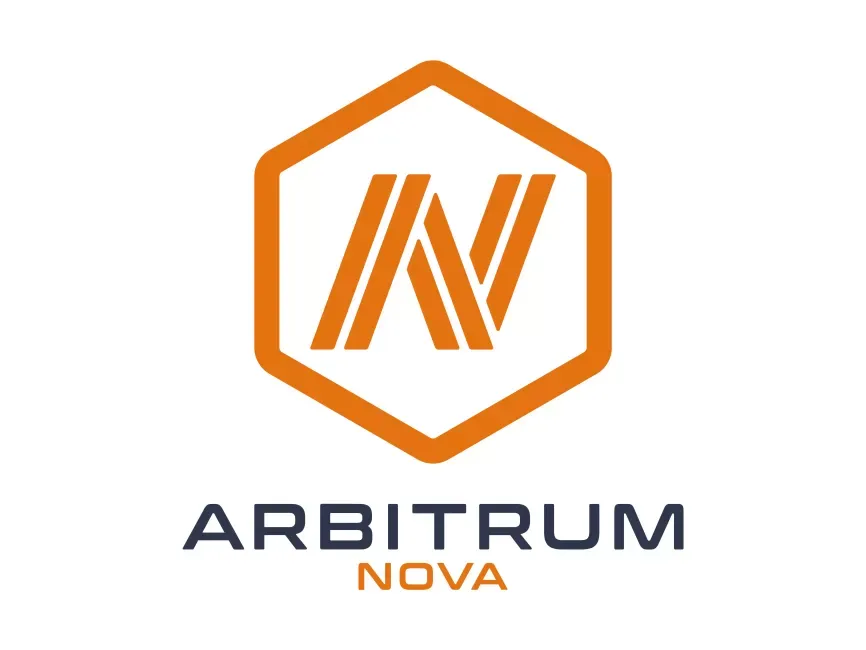
Arbitrum has garnered recognition primarily for hosting the largest L2 DeFi ecosystem and a thriving Web 2.5 gaming community led by Treasure DAO. However, like Optimism, Arbitrum’s ecosystem has evolved beyond a singular L2 solution to encompass diverse networks.
While Arbitrum One remains the flagship chain, boasting the largest DeFi ecosystem among all rollups with a TVL of $12.09 billion, other networks with enhanced throughput have emerged as preferred choices for hosting on-chain games. Launched in August 2022, Arbitrum Nova is a similar L2 solution within the Arbitrum ecosystem.
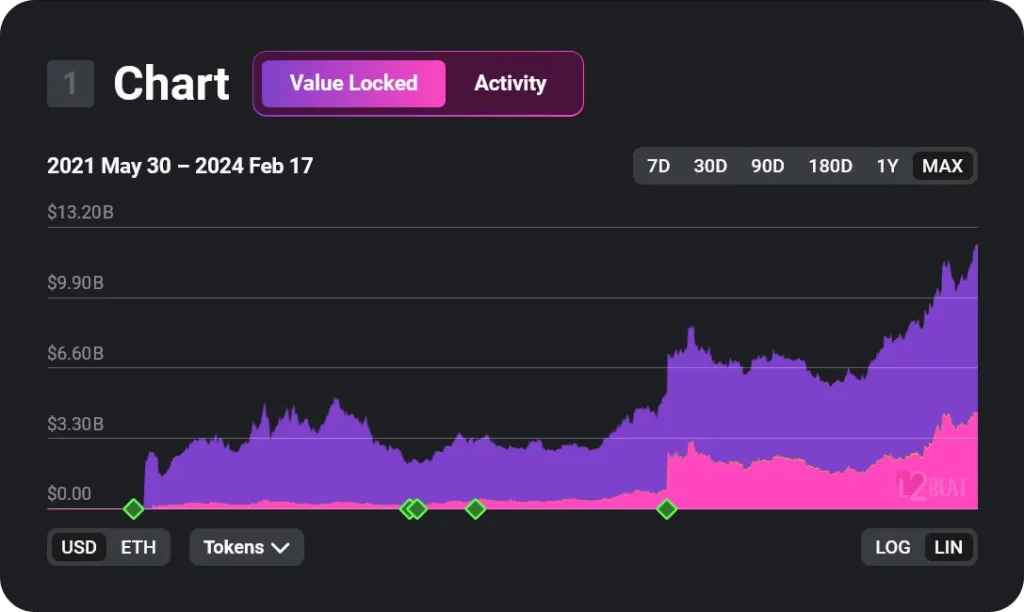 Source: L2Beat
Source: L2Beat
Unlike its counterparts, Nova adopts a unique approach by employing a third-party set of validators known as a Data Availability Committee (DAC) via Arbitrum AnyTrust. This committee validates transactions and serves as a data availability layer, distinguishing Nova from traditional L2 solutions.
Nova’s innovative design significantly reduces gas costs compared to conventional L2 solutions, offering approximately 3-5 times higher throughput than Arbitrum One. However, this scalability enhancement comes with a tradeoff of relatively weaker security guarantees.
Arbitrum Nova was specifically developed to tackle scalability issues witnessed on base blockchains due to the increasing pressure from gaming transactions. While Arbitrum One alleviates costs and upholds security, Nova further enhances transaction speed while maintaining cost efficiency.
Nova achieves this by storing transaction data off-chain, managed by the DAC committee, eliminating the need to store data on the Ethereum blockchain. Nova’s improved scalability has attracted a variety of consumer applications, including Reddit’s Community Points, highlighting its appeal as a cost-effective block space solution.
Furthermore, the network’s affordability has enticed on-chain gaming projects like Pirate Nation, Rhascau, Nova Chess, and Land Labor Capital, among others, to establish their presence on the network.
Arbitrum Nova’s enhanced speed and cost-effectiveness have spurred game developers to pioneer the next wave of decentralized gaming experiences on the network. While Arbitrum may not be traditionally associated with gaming, many on-chain games are emerging across the Arbitrum ecosystem.
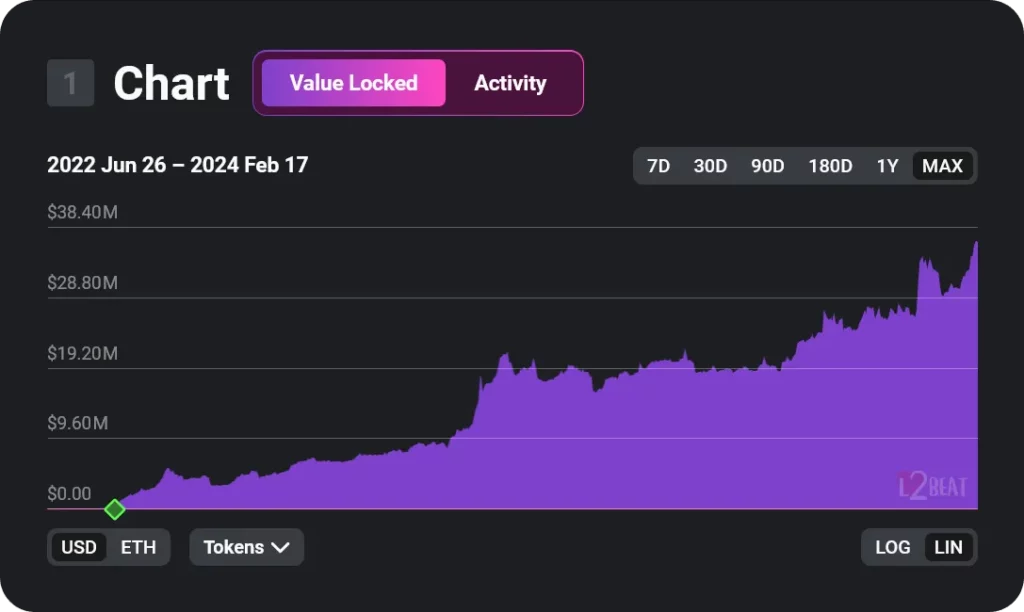 Source: L2Beat
Source: L2Beat
Challenges on the Path to Gaming Dominance
Despite its potential, the Arbitrum ecosystem encounters hurdles in pursuing on-chain gaming supremacy. One notable limitation is the absence of a dedicated “native engine” exclusive to Arbitrum.
Adaptable to various EVM chains, frameworks like MUD are predominantly utilized on OP Stack L2s. Conversely, Dojo, another leading framework for on-chain game development, operates exclusively in Cairo, primarily serving Starknet and associated L2s/L3s. Emerging frameworks like Curio and World Engine are also forging their custom stacks.
So, the absence of an engine tailored explicitly for Arbitrum poses a challenge in attracting more game developers to the ecosystem. While Proof Of Play‘s undisclosed engine holds potential, its alignment with Arbitrum and focus on easing game development remain uncertain. Consequently, Arbitrum Nova’s status as a leading on-chain gaming ecosystem hinges on the emergence of a dedicated engine and concerted efforts to nurture game development on the platform.
5. Arbitrum Orbit (L3)

In March 2023, the Arbitrum Foundation unveiled its scaling innovation – Arbitrum Orbit, designed as a L3 blockchain integrated with the Arbitrum Nitro platform. Beyond offering lower transaction expenses and improved scalability, this development empowers developers to establish their self-governed specialized blockchains on the Arbitrum Nitro framework. This flexibility enables developers to tailor-make blockchains to suit their unique requirements, providing a permissionless avenue for deploying customized dedicated chains using Arbitrum tech.
Orbit chains can be constructed on Arbitrum One and Arbitrum Nova, the two L2s within the Arbitrum ecosystem. Leveraging rollup and AnyTrust technologies, Arbitrum facilitates the development of Orbit chains.
Additionally, Orbit introduces Stylus, a tool enabling developers to craft smart contracts in Rust, C, and C++ while retaining complete EVM compatibility. This enhancement enriches the developer experience and unlocks new potential applications while significantly reducing gas costs through WebAssembly (WASM) technology.
Moreover, Orbit chains maintain the adaptability to embrace forthcoming upgrades to Nitro, Arbitrum’s foundational technology stack. It implies that Orbit chains can effortlessly incorporate planned features such as permissionless validation and MEV capture without requiring approval from the Arbitrum DAO.
Projects like Sanko GameCorp (game publisher), Syndr, and Parallel Network have opted for Arbitrum’s Orbit network for their development endeavors.
Besides, Arbitrum Orbit is an optimal solution for gaming applications due to its tailored functionalities and versatility. Unlike Ethereum’s uniform approach, Orbit empowers developers to construct fully customizable chains with tailored fee structures, smart contract capabilities, and governance mechanisms, enabling the establishment of diverse gaming ecosystems.
Moreover, Orbit fosters interoperability through fraud proofs and data availability committees, facilitating seamless asset and data transfer between chains, a vital aspect for gaming environments with interconnected economies and assets.
Additionally, by segregating dApps from L1 and L2 traffic, Orbit shields gaming applications from the repercussions of other apps’ on-chain activities, ensuring consistent gas prices and uninterrupted gameplay experiences. The option to utilize ERC20 tokens as native gas tokens for gas fees enhances integration with dApps’ ecosystems, streamlining transactions for players.
In parallel, the Arbitrum Foundation has incorporated Celestia, a modular solution, into Orbit to serve as its data availability layer. Applications built atop Orbit will have the choice to publish their data to Celestia.
Although no live games exist on Arbitrum Orbit, its infrastructure superiority is poised to attract numerous game studios to launch their games on this L3 platform. In contrast to the established ecosystem of Arbitrum One, the activities on Orbit remain relatively restricted, suggesting future opportunities for airdrops.
6. Xai (L3)
Xai marks a significant milestone as one of the first L3 solutions within the Arbitrum ecosystem, geared towards introducing traditional gamers to web3 gaming. With Xai, gamers can possess and trade valuable in-game items within their favorite games without using crypto wallets.
The Xai Foundation leads the Xai initiative in partnership with Offchain Labs, the creators of Arbitrum, and Ex Populus, a prominent Web3 game developer. Ex Populus, renowned for securing substantial funding rounds of $3 million and $8.5 million in 2021, attaining an estimated valuation of $80 million, boasts industry veterans from acclaimed companies like Pixar, Ubisoft, Activision, and Blizzard.
Presently, Xai hosts five games, Final Form, LAMOverse, Carnival, Tarochi, and Kashi, with Tarochi, an on-chain RPG, being the first to be released, while others are still developing. Notably, LAMO has already launched physical toys inspired by popular gaming influencers such as Ninja and Dr. Disrespect, enabling toy owners to unlock these characters within the game.
Besides, Xai harnesses the unique custom gas tokens feature offered by Arbitrum Orbit. Additionally, the Xai Foundation unveiled a partnership with the leading esports organization Team Secret to advocate for and engage in the network, particularly focusing on competitive gaming.
Anticipation of Future Developments
Meanwhile, Laguna Games, a prominent game developer, is transitioning its Crypto Unicorns and associated NFT games from Polygon to Xai, although an official timeline has not been provided. Aron Beierschmitt, the co-founder and CEO of Laguna Games, anticipates this migration to be the “largest in the history” of blockchain games due to the extensive code involved. He has hinted at a gradual rollout strategy comprising multiple migrations, potential airdrop announcements, and other engaging activities.
In January of this year, the Xai Foundation conducted an airdrop, distributing 125 million XAI tokens (equivalent to 5% of the total token supply) to eligible recipients, including holders of specific Xai NFTs and operators of Sentry Nodes, which act as validators supporting the network. The foundation has also hinted at a “Season 2” of airdrop token rewards but has not yet disclosed how users can earn additional rewards. The deadline for claiming the airdrop is set for 07/07/24.
Presently, XAI’s Lunar New Year airdrop is ongoing. Participants must be Sentry Key holders who have completed the KYC process and shared tweets about $XAI to qualify for this airdrop. Tobias Batton, co-founder and CEO of Ex Populus, has revealed a surge of interest from projects looking to build on or migrate to Xai, promising numerous forthcoming announcements.
7. Myria (L2)

Myria is a blockchain game development studio and an Ethereum L2 solution aimed at scaling digital assets and blockchain gaming experiences. Myria amplifies its ecosystem by employing ZK roll-up tech, enticing the next generation of gamers into Web3.
Boasting a vibrant community exceeding 2M users, Myria has already attracted over 270 blockchain projects to its platform.
Myria’s primary objective is to craft AAA blockchain games prioritizing gameplay over token acquisition. This philosophy shines through in implementing NFT items within their games; rather than purchasing NFTs outright, players unlock them like traditional gaming cosmetics.
Moreover, players can earn $MYRIA, the platform’s native token, by achieving leaderboard milestones. $MYRIA debuted in early April 2023, initially launching on the OKX exchange before expanding to other platforms such as KuCoin, Gate, MEXC, Bitmart, and Uniswap.
In line with its gameplay-centric approach, games within the Myria ecosystem are free-to-play, further accentuating the platform’s focus on providing engaging gameplay experiences.
Moreover, developers seeking to elevate their projects can leverage the Myria Core SDK, Myria Wallet SDK, and Myria Game SDK. Simplifying the onboarding process is the Myria Developer Portal, which adopts an API-first strategy, streamlining complex blockchain interactions through Myria’s assortment of REST APIs and SDKs. It empowers developers to create various NFT products and blockchain games, within hours, eliminating the need to learn specialized blockchain coding languages such as Solidity.
Besides, the Myria Developer Grants Program offers direct funding opportunities, enabling developers to apply and receive up to $500,000 worth of MYRIA tokens to fuel their projects.
Meanwhile, the Myria nodes serve as the cornerstone of this L2 ecosystem. Limited to 40,000 nodes, these contribute to various network functions, including network testing, decentralized data storage, oracles, and governance. Additionally, they play a crucial role in upholding the decentralization and security of the Myria ecosystem.
Initially priced at $4,500, the base cost of a MYRIA Node has steadily risen due to the company’s unique pricing ramp mechanism and the increasing circulation of Nodes. Currently, the base price for each node is $6000.
 Source: L2Beat
Source: L2Beat
In late November 2023, Myria officially joined NeoTokyo, a networking group by Alex Becker focused on developing the gaming metaverse. Alongside this membership, Myria welcomed Alex Becker as an advisor.
The gaming ecosystem commenced with 360 Cricket, which aimed to create the first celebrity-backed cricket arcade mobile game for enthusiasts. With an influx of developers building on Myria, the ecosystem is experiencing rapid expansion. Currently, there are over 20 games in various stages of development and live release, including Block Royale, Metarush, and Nitro League.
Future Airdrop Expectations
Furthermore, Myria conducted an Alliance Keys NFT Airdrop, allowing community members to complete different tasks, accrue points, and collect key fragments of varying rarities. These fragments were then utilized to assemble and unlock corresponding Alliance Keys NFTs of the same rarity.
Individuals who accumulate enough key fragments could mint a free NFT until September 1, 2023, for Ultra Rare keys, and October 1, 2023 for Rare and Common keys. We anticipate future airdrops for $MYRIA holders and specifically for MYRIA Node operators.
8. Beam (~L2)

Beam ($BEAM) is a gaming-centric blockchain platform launched by Merit Circle in the previous year. Built as a subnet on Avalanche, Beam integrates seamlessly with LayerZero, an interoperable omnichain protocol. This enables minting all game assets as omnichain NFTs for easy transfer across different blockchain networks.
The initial announcement of Merit Circle’s active development of a gaming platform emerged in early 2023. By August 2023, the DAO granted a select group of game developers access to Beam. Then, in early November 2023, the project team announced the removal of permissioned access, transitioning Beam into a public blockchain.
With the opening of the network as a permissionless mainnet, Beam introduced several key products:
- Beam Bridge: Developed in collaboration with LayerZero, this bridge facilitates the transfer of funds from various blockchains onto the Beam subnet.
- Beam Swap: An AMM enabling users to trade various assets available on the Beam subnet.
- Beam Companion App: Tailored for gamers on the Beam network, this mobile app allows web3 gamers to monitor their gaming assets and statistics conveniently. Download links: IOS; Android.
- Sphere: Beam’s dedicated NFT marketplace for gaming assets.
- Beam Hub: A platform for discovering new games and participating in campaigns and tournaments.
- BeamOS: A unified experience integrating all Beam products.
- Beam SDK: Empowering game developers with a flexible layer to build according to their preferences without dictating how or when they should use the SDK.
Leveraging Avalanche’s base architecture, Beam offers users a high-performance environment with fast processing times and low fees, crucial for players and game developers in modern Play-to-Earn (P2E) games and the extensive trading of in-game assets.
Despite being in its early operational stages, Beam is already garnering significant interest from the gaming community. The first game to go live on Beam was Raini: The Lord of Light, a fantasy-themed card game, followed swiftly by diverse titles and genres. Although not all games run on Beam, the platform’s gaming hub lists over 212 games.
In December, Merit Circle DAO partnered with Immutable and Polygon to expand the Beam gaming ecosystem. This strategic alliance aimed to see Beam launch on the Immutable zkEVM, integrating Immutable’s cutting-edge web3 solutions like Immutable Orderbook and Immutable Passport into the Beam ecosystem. Besides, numerous game launches or integrations with Beam are also anticipated throughout the year.
9. Ape Chain (L3)

In January 2024, ApeCoin DAO decided to build its dedicated blockchain to streamline and reduce the costs associated with APE transactions. The ape community presented various proposals for the creation of “ApeChain” on platforms such as Arbitrum, OP Stack, and ZK Stack. Following deliberations, ApeCoin DAO endorsed AIP-378, a collaborative proposal by Horizen Labs and Offchain Labs, opting to construct the new platform on Arbitrum Orbit.
As a governance and utility token, ApeCoin plays a multifaceted role within the ecosystem of applications, games, and events associated with BAYC and other NFT collections developed by Yuga Labs. However, the token’s utility on Ethereum has often been hindered by prohibitively high gas fees on Layer 1.
In February, frustration arose on a smaller scale during an NFT mint linked to Otherside, which involved free items for players of the tie-in Legends of the Mara game. Yuga Labs faced challenges in mitigating the resulting outrage. To address these issues, ApeChain will facilitate transactions on Arbitrum One. Additionally, the ApeChain roadmap includes the development of a new iteration of APE as an OFT (omnichain fungible token) powered by LayerZero.
ApeChain was conceived as a Web3 gaming solution requiring high throughput and customizable tokenomics from the outset.
Currently, Yuga Labs’ Otherside metaverse game is the prominent project within the Bored Ape gaming ecosystem, with over $1.25 billion worth of NFT trading volume recorded. The company has also ventured into other gaming endeavors, including last year’s Dookey Dash, which will receive a new free-to-play version soon. Additionally, different studios are leveraging Ape assets to develop games like Serum City.
10. Other Gaming Focused L2 & L3 Solutions
Ancient8 (L2)

Ancient8 is an Ethereum Layer 2 platform tailored for gaming and community-driven development, currently in the developmental phase.
- Employing OP Stack Layer 2 tech, Ancient8 offers blockchain games the core features of Ethereum while significantly reducing costs and requiring no code modifications.
- In September 2023, Ancient8 unveiled its Testnet V1, followed by the launch of Ancient8 Testnet V2 in January 2024, featuring an upgrade with Celestia.
- With Celestia integration, Ancient8 anticipates a drastic reduction in data availability costs by at least 100x, rendering gas fees nearly negligible for developers and gamers on the Ancient8 Chain.
- Securing a total of $10 million ($4M & $6M) in financing, Ancient8 has received investments from prominent backers such as Animoca, Pantera, Coinbase, and others.
- Currently, while there are no live games on Ancient8, there are eight active dApps.
From developing on the Ancient8 Chain to showcasing collections on the Dojo Marketplace, partnering with Space3 for onboarding, utilizing Ancient8 Gaming for localization, leveraging ReneVerse for in-game advertising, to establishing an identity with A8ID, Ancient8 offers a comprehensive approach to Web3 gaming.
Moreover, games like deWorld and OmniZone are developing on the Ancient8 Chain, and we can anticipate more launches throughout the year.
Treasure Chain (L2)
Treasure Chain is an upcoming Ethereum layer-2 scaling network developed by Treasure.
- In February 2024, the core team of the ecosystem unveiled plans to introduce a Treasure Chain powered by Arbitrum.
- This innovative network will utilize the existing MAGIC token to cover gas fees, creating a seamless user experience.
- Additionally, Treasure Chain will incorporate a network of “Infinity Chains,” tailored rollup implementations designed to support various games within the Treasure ecosystem.
- These Infinity Chains will be customized to meet the specific requirements of each project or game.
- According to the project’s roadmap, Treasure aims to debut the Treasure Infinity Chains on the test net by Q1 2024 to foster early adoption and gather feedback.
- The official mainnet launch is slated for Q3 2024.
- Alongside the development of the Treasure Chain, the team is also working on crafting a core Treasure Development Kit (TDK) and a comprehensive Treasure Management Console, further enhancing the functionality and accessibility of the ecosystem.
As the ecosystem is still in development, many anticipate games to launch around Q3 2024, either concurrently with or following the mainnet launch. However, the possibility remains of games being introduced on the testnet beforehand, allowing studios to gauge user feedback and test the platform’s capabilities.
SuperVerse

SuperVerse is an integrated ecosystem facilitating seamless user interaction with games, NFTs, and digital collectibles.
- Initially established as SuperFarm, a cross-chain NFT gaming platform, SuperVerse underwent a rebranding in 2023.
- The SUPER token serves as the linchpin for managing payments and funding within the SuperVerse ecosystem, offering a secure means of rewarding participants engaged in the SuperVerse gaming environment.
- Concurrently, the SuperVerse DAO oversees the operational facets of the system.
- Stakers in the SuperVerse DAO staking pool exercise governance over existing on-chain product fees, such as those from Impostors.
- Stakers gain access to exclusive events, customized cosmetics, and additional unique benefits across partner ecosystems.
- Impostors is the first game within the SuperVerse ecosystem.
- There are many games alongside titles like the AAA-rated My Pet Hooligan, which is developing on SuperVerse.
Furthermore, SuperVerse is actively developing its proprietary blockchain tailored specifically for gaming purposes. While many details remain undisclosed, the platform claims the SuperVerse native blockchain offers lightning-fast, cost-effective transactions facilitated by the SUPER token. Collaborating with Polygon, Immutable, and Beam, SuperVerse will also integrate LayerZero to achieve omnichain capabilities.
Neon EVM (Not a Gaming L2)

Neon is an EVM-compatible network offering direct access to Solana liquidity and parallelized transaction execution. From a developer’s standpoint, NeonEVM resembles the native EVM but with benefits from Solana’s enhanced transaction speed and lower gas fees.
In November, Neon EVM partnered with deBridge, augmenting cross-chain interoperability. This collaboration enabled Neon projects to tap into all EVM chains, including Ethereum, BNB, Polygon, Arbitrum, Fantom, Optimus, Linea, HECO chain, Base, and Avalanche. Notably, Neon EVM’s testnet now supports multi-token gas payments, permitting users to settle fees in various tokens, including SPL, USDC, and SOL. This functionality offers increased transaction token flexibility, fostering more user-centric experiences.
Although Neon completed its mainnet launch in December 2022, it has thus far garnered only $1.3M in total value locked across five projects, according to DeFiLlama.
In December, Neon initiated a points campaign to bolster engagement with the protocol. The platform distributed points to users who create social media content and partake in Neon events, such as hackathons, conferences, and online gatherings. According to its roadmap, Neon intends to roll out a grants program, establish a NeonDAO, and achieve full compatibility with Neon EVM this year.
Conclusion
In 2024, the adoption of Layer-2 technology has transcended being merely a trend; it represents a seismic shift in the blockchain landscape. Builders appear to have heeded Vitalik’s advice from 2020, as there is an unprecedented surge in momentum towards implementing L2-based on-chain gaming infrastructure.
Concurrently, the emergence of Layer 3 solutions presents a compelling innovation in the cryptocurrency sphere, amalgamating the strengths of both Layer 1 and Layer 2 to enhance scalability while maintaining robust security measures. Although Layer 3 development is still in its nascent stages, it is evident that it will soon become the new narrative within the gaming space, heralding a new era of blockchain evolution.
Clearly, the scalability competition is intensifying, marking just the beginning of a transformative era. What truly distinguishes these scaling solutions is not solely their technological prowess but the vibrant communities rallying behind them, driving innovation and adoption forward.
📚 Learn more about Yoda Labs:
Web | Yoda Labs Article | Twitter | Linkedin

are registered trademarks. All rights reserved.



